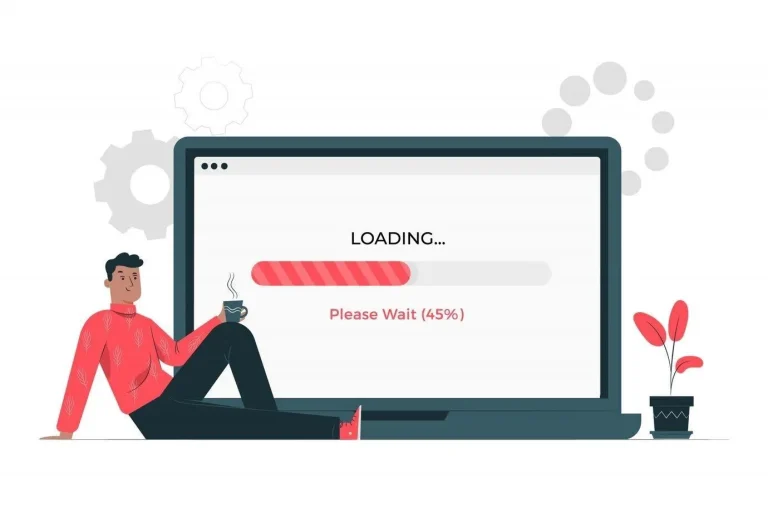In the digital landscape, website performance is of utmost importance, and finding harmony between performance and ads is a delicate task. So why is this balance crucial? The answer lies in three words: Core Web Vitals.
Core Web Vitals is a set of factors that significantly influence the overall user experience of a webpage, affecting its ranking, page speed score, and, ultimately, your ad revenue.
In fact, the impact of Core Web Vitals on ad revenue is undeniable. According to a survey conducted by AdSense, websites that load within five seconds generate double the revenue from web traffic compared to those that take 19 seconds to load.
Now, you might be wondering how ads can affect these vital metrics and what you can do to optimize them. That’s precisely what we’ll explore in this guide. We’ll uncover the intricate relationship between ads and Core Web Vitals, providing you with actionable insights and strategies to enhance your website’s performance while maximizing your ad revenue.
Table of Contents
What Are Core Web Vitals?
Core Web Vitals is a set of specific factors that Google considers vital for the overall user experience of a webpage. They consist of three specific page speed and user interaction measurements: Largest Contentful Paint (LCP), First Input Delay (FID), and Cumulative Layout Shift (CLS).
- Largest Contentful Paint (LCP): This measures the loading performance of your webpage. To provide a good user experience, LCP should occur within 2.5 seconds of when the page first starts loading.
- First Input Delay (FID): This quantifies interactivity. To ensure a seamless user experience, pages should have an FID of less than 100 milliseconds. FID will soon be replaced by Interaction to Next Paint (INP) in March 2024.
- Cumulative Layout Shift (CLS): This evaluates visual stability. To avoid content shifting unexpectedly, pages should maintain a CLS of less than 0.1.
But why are these Core Web Vitals so crucial for publishers?
The answer is twofold: website ranking and ad revenue. Google uses Core Web Vitals as a ranking factor in its search algorithm. A better score can lead to improved visibility in search results, driving more organic traffic to your site.
Moreover, these metrics also impact your page speed score, directly influencing ad revenue. A faster-loading website provides a better user experience, encouraging visitors to stay longer and interact more with your ads.
Understanding Core Web Vitals is just the first step. As we’ve seen, these metrics are crucial for website ranking and ad revenue. But what happens when these metrics change?
In the next section, we’ll explore recent updates to Core Web Vitals and their impact on publishers.
Impact of Ads on Cumulative Layout Shift (CLS) and Mitigation Strategies
Cumulative Layout Shift (CLS) is a metric that measures the visual stability of a webpage. It quantifies how many elements on the page move around as the page loads. A low CLS score (0.1 or less) is ideal, as it indicates a stable page.
Ads can significantly impact CLS. They are often loaded asynchronously, meaning they can displace content on the page if sufficient space isn’t reserved for them. This can lead to a poor user experience, as content unexpectedly shifts around, making it difficult for users to interact with the page.
Mitigation Strategies
Reason #1
Unwanted layout shifts can occur when an ad slot expands or collapses, as a display ad is called.
This often happens due to the use of the collapseEmptyDivs() function, which collapses ad slots when there’s no ad to display.
Solution
To mitigate the impact of layout shift and reduce Cumulative Layout Shift (CLS), use Google Ad Manager Historical report to know the fill rate of ad slots and ensure that:
- The ad slots that are likely to be filled should always start ‘expanded’.
- The ad slots that are unlikely to be filled should always start ‘collapsed’.
Reason #2
Adding Fluid ad slots on the webpage.
Fluid ad slots do not specify a fixed set of ad sizes and automatically resize to fit the ad creative. Due to this, you cannot reserve ad space for the fluid ad slots before requesting ad content.
Solution
If you use fluid ads, consider using the fluid size for ad slots that are below the fold (BTF). Also, fetch the fluid ad slot as early as possible so that it’s already resized by the time users view the ad slot.
Reason #3
Multi-size ad slots can also cause layout shifts.
While reserving enough ad space can prevent layout shifts for static ad slots, it also doesn’t work for multi-size ad slots.
Solution
Reserve space for the largest ad size configured to serve multi-size ads. Also, reserve space for the ad size most likely to be served. You can use Google Ad Manager reports to understand historical fill data and reserve ad space for the most likely ad to serve.
Be aware that this comes with a risk: the ad creative served may not match the reserved ad size, leading to blank space around the ad or cutoff/extended content. To mitigate this, limit the range of ad sizes able to serve the ad slot and resize the ad slot to fit the ad creative.
Additional Tip: Be cautious when placing non-sticky ad slots near the top of the viewport. Ensure there’s enough space so the ad doesn’t shift headlines or other elements.
Impact on First Input Delay (FID) and Mitigation Strategies
First Input Delay (FID) is a key metric that gauges your site’s interactivity and responsiveness. It measures the time it takes from when a user first interacts with your page – think clicking a link or tapping a button – to when the browser can actually begin processing event handlers in response to that interaction. To ensure a positive user experience, it’s recommended that sites aim for a First Input Delay of 100 milliseconds or less.
However, it’s important to note that not all users will interact with your site during each visit, and not all interactions are relevant to FID. For instance, a user’s first interaction might occur at an inopportune time, such as when the main thread is busy for an extended period.
Conversely, it might occur when the main thread is completely idle. This variability means some users might not have FID values, while others might have low or high ones.
Now, let’s talk about ads. Ads, particularly responsive or video ads that require user interaction, can negatively impact FID. If third-party ad codes obstruct your web page’s rendering or take excessive time to render the ad, it can result in a poor FID score. This is because FID is closely tied to the RAIL model, which emphasizes fast, responsive sites.
Given these complexities, Google continuously seeks to refine and improve user interaction metrics. With this in mind, an important update is on the horizon: the introduction of Interaction to Next Paint (INP) in March 2024.
This new metric is an evolution of FID and part of Google’s Core Web Vitals initiative. INP measures the time it takes for a user to interact with a page after it has finished loading, focusing more on post-load interaction. In essence, INP aims to account for interaction delays affecting engagement and ad revenue, which FID did not fully address.
For publishers, especially those reliant on user interaction, such as news websites, this update should be closely followed. It’s crucial to optimize pages for fast loading and smooth user interactions to meet the INP standard and maintain a positive user experience.
Mitigation Strategies
- Remove Redundant Third-party JavaScript: Your website might have hundreds of JavaScript libraries, some of which might be useless. Such unused JavaScript codes should be removed to reduce the latency caused by JavaScript. You can use the PageSpeed Insights tool to find out which redundant element has contributed to the latency and remove it.
- Optimize for Lazy Loading: Lazy-loading is one of the best methods to improve page speed and Web Vitals. Ads are important, but users visit your website for content, not ads. By implementing lazy loading, you can deliver content and ads faster. This technique is highly recommended for low-priority ads (house ads) or below-the-fold ads.
- Load Ad Tags Asynchronously: Synchronous ad tag loading blocks content and ads from loading fast. It’s always recommended to load third-party scripts asynchronously. So, use the ‘async’ attribute to load Google Publisher Tags.
<script async src=”https://securepubads.g.doubleclick.net/tag/js/gpt.js”></script>
Remember, improving FID is not just about optimizing your ads. It’s also about optimizing the overall performance of your site. This includes code splitting, loading less JavaScript upfront, and more. Focusing on these areas can improve your site’s first user interaction and overall interactivity.
Impact of Ads on Largest Contentful Paint (LCP) and Mitigation Strategies
Largest Contentful Paint (LCP) is a metric that measures the time it takes for the largest content element in the viewport to become visible. This could be an image, a video, or a text block. A good LCP score is considered to be 2.5 seconds or less.
Ads, especially those placed above the fold and larger in size than other elements, can impact LCP. For instance, if an ad takes longer to render, it can delay the LCP, affecting the user experience and, potentially, the site’s search engine ranking.
Recognizing the need for better site performance while maintaining privacy, Google Search has announced the general availability of signed exchanges (SXG) for all web pages. SXG is a privacy-preserving prefetching technique that enables pages to be loaded in advance without compromising the user’s privacy.
This benefits publishers aiming to improve their LCP scores, as prefetching via SXG allows quicker rendering of large content elements, including ads. It can lead to faster loading times, enhance user engagement, and potentially increase ad revenue. Hence, publishers should consider adopting SXG to reduce the impact of ads on their LCP scores and improve overall site performance.
Mitigation Strategies
- Move Large Ads to Below-the-Fold: If a large ad placed above the fold takes time to render, consider moving it to below-the-fold. This ensures that the ad doesn’t delay the rendering of the largest content element in the viewport.
- Optimize Header Bidding or Waterfall Set-Up: Header bidding auctions or waterfall setups can increase latency, leading to a higher LCP. Make sure these processes are optimized to load quickly.
The Balance Between Ads and Core Web Vitals
The quest for optimum website performance continues in the ever-evolving digital publishing landscape. Undeniably, a well-optimized website is not merely a luxury but a necessity in today’s user-centric digital era.
As ads continue to be a crucial part of this equation, the right mitigation strategies can significantly enhance your website’s performance and user experience while maximizing ad revenue. Always remember that as much as the digital landscape is competitive, it’s also ripe with opportunities.
With the right focus and commitment to improving your website’s performance metrics, you can create a truly engaging digital space that satisfies your audience and drives your growth and success in the digital publishing industry.























